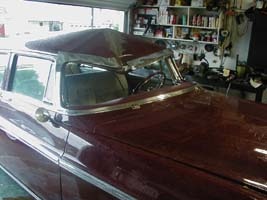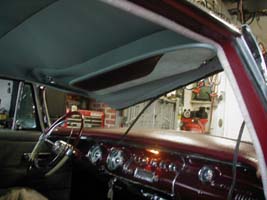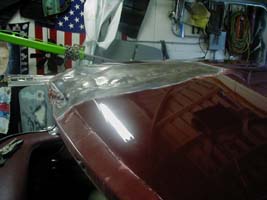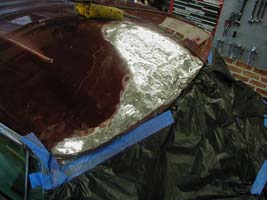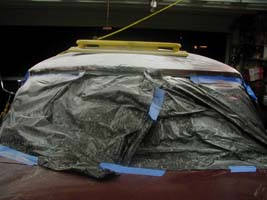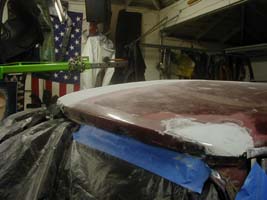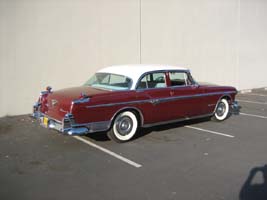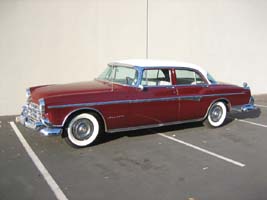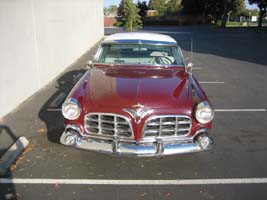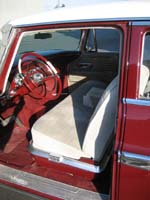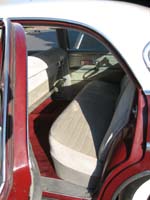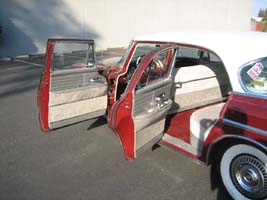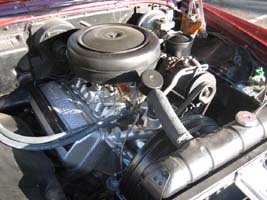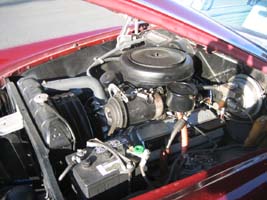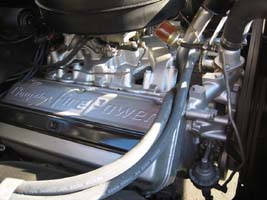Click on any image to see a larger version
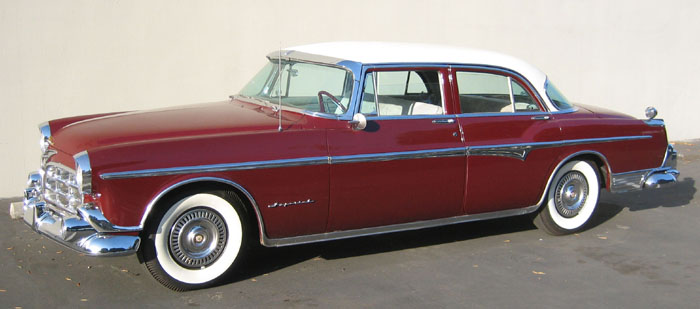
from Kenyon Wills
This car came to me as a victim of cruel and unusual
Incompetence. A buddy owned it and sent it to his
mechanic for repairs, which were to consist of a tune
up and brake job, but not before having the car
totally repainted and most of the chrome replated.
Anyway, the mechanic had various Old Cars about his
lot, including a prewar Bentley, so I figured that if
he can work on older English cars, well, heís probably
qualified to work on an Imperial.
Boy was I wrong.
Things took a turn for the worse after I met him and
offered the use of my drum puller, as this is an
important tool required for most pre 1963 Imperials.
He politely declined in a way that made it clear that
he Knew What He Was Doing and didnít need help from
some guy that was a buddy of the owner.
OK.
Well, after he tried to SAW the drum off the rear end
and damaged the rear axle, resulting in the purchase
of an entire rear end, he was a lot more interested in
borrowing the drum puller.
Iíd lost interest in loaning tools to him by that time
and passed.
I found out about all of this saw business because the
car had been at this guyís shop for a good 6 months at
this point, and I figure that a tune-up and brake job
should go a little faster than that. After hearing
this story, I immediately started lobbying to get the
car yanked and relocated to someone else that I know
who was qualified and who didnít use saws to do brake
jobs. I was voted down due to a long-standing
relationship that my buddy had with the guy, and I
told him that no good would come of it.
About 2 months later, I got a call from a very
depressed and unhappy Imperial owner.
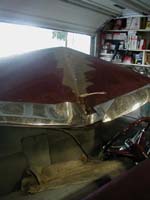
The car had been moved about and in the process,
Reverse had somehow disappeared, but that wasnít the
bad news. The shop closed for a 3-day weekend, and
one of the employees put the car into the shop and
rolled the door down. Upon return, a lift that had a
SUV on it had let go and dropped onto the Imperial,
which had been parked partially underneath it.
This resulted in pushing the top edge of the
windscreen near the rear view mirror down in the
direction of the dashboard.
The best part of this was where the shop-owner
explained that he did not have any Garagekeeperís
Liability Insurance, and begged my buddy to let him
have a pal repair the car so that this didnít suck up
his savings. I figured that the "savings" were all
the money that heíd saved by not having insurance, and
didnít feel bad. The car had coverage, and they paid
out, totaling the car in the process.
I bought the Salvage title to the car and it was mine.
I proceeded to get quotes for up to $9000 to cut all
of the roof pillars and graft a new top onto the car.
That was pretty expensive, and I decided to try my
hand at repairing the car.
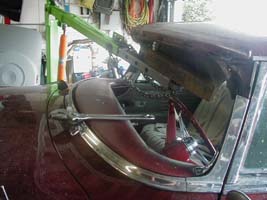
I used an engine hoist, and mounted a large steel bolt
in the end, making it look like a rhinoceros. I
placed the end of the engine hoist in through the
front window opening, and used the lift to reverse the
bends in the metal. The opening gradually returned to
its original shape, and I began to hold out hope that
I might pull this off.
The metal just behind the lip was horribly stretched,
and after a certain point, lifting it caused more
wrinkles than it removed, so I got 70% there by
bending metal, and brought it the rest of the way by
simply putting large globs of filler in. First layers
were Metal2Metal as a base, which is the strongest,
hardest available, and I used this as a base to get
good adhesion to the metal body, which I had ground
with a grinder to give the metal texture and "bite".
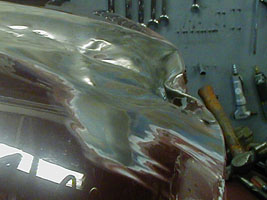
The next layer was Kitty Hair, which has fiberglass
strands in it for added strength, and final top layers
were conventional Rage filler, used for final shaping.
I got a bit of a surprise the first time that I drove
the car. Reinstallation of the trim and chrome had
also been part of the job that Mr. Sawz-all had to
perform, and the first pothole made the car sound like
it had pots and pans hanging off of every body panel.
The chrome and trim had been reinstalled, but had not
been tightened down - everything was thumb-tight at
best, so I spent the better part of 2 days firmly
attaching all of the loose trim and bumpers.
I sprayed the roof in an off-white in an attempt to
mask the fact that the roof has an ever-so-slight
raised area in it at the front/center where I was
unable to get the metal to lie down as it was supposed
to. Nobody has spotted it without it being pointed
out, so I think that I did pretty well, and I'm quite
pleased with the results, and at just under $200 for
materials (not including replacement trim, chrome,
glass, etc.), the repair came off pretty affordably.
That roof-area has to be the least-scrutinized spot on
the entire body, so I got off pretty lightly, I think.
Otherwise, the car is in top shape. We drove it to
Yosemite, and was one of only 3 pre-1980 cars that I
saw on the road during the entire 500 mile trip.
Highlights include new tires, new chrome, new paint, a
rebuilt engine & transmission, new brakes, and new
exhaust. The interior was redone in the recent past,
and is in good shape. The only flaws at this point
would be an inoperative dash-clock, a crack in the
windscreen, slightly balky drivers window, and reverse
lights that don't illuminate.
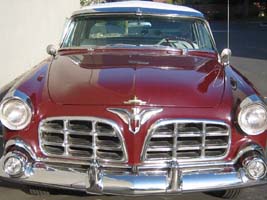
Oh, I'm also missing the plastic "shield" coat-of arms
medallion for the front eagle, so if you have one, I'd
be VERY interested in it!
The car is easy to drive and has medium power in
comparison to later cars - the 413 and 440 engines
really were considerably more powerful, and this car
has a 2-speed power-flight transmission, so does not
shift nearly as smoothly as a Torque-Flight, as found
on subsequent year cars. The main difference being
that the transmission will hold first longer, and
"wants" to be prodded to be shifted via a lift of the
foot off of the accelerator, where the later units
just kick down in a more automatic way. The earlier
cars that had the Fluid Drive transmissions operated
in a way that although shifting was done in "automatic
mode", the driver was still expected to have some
shifting input in the way that the gas-pedal was
operated - a gentle lift of the foot when it was time
to shift.
| 

